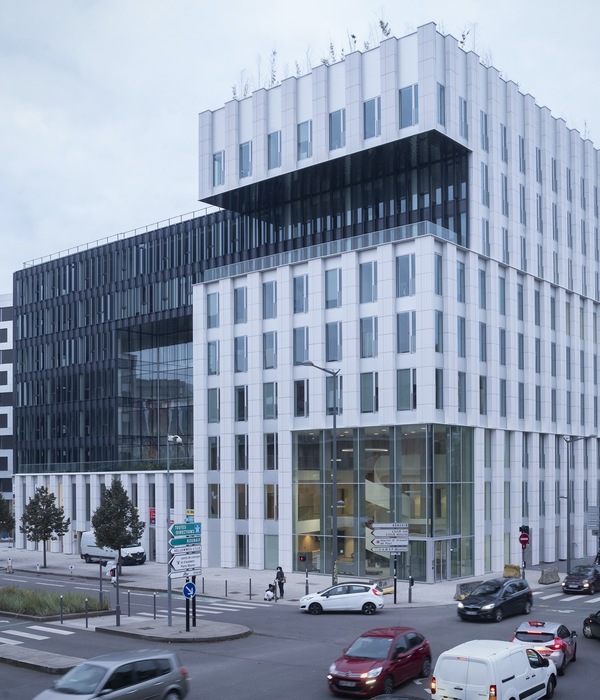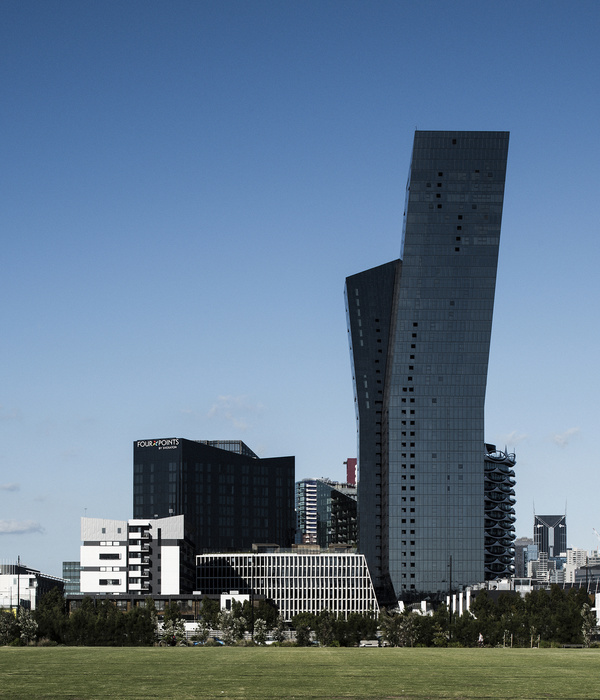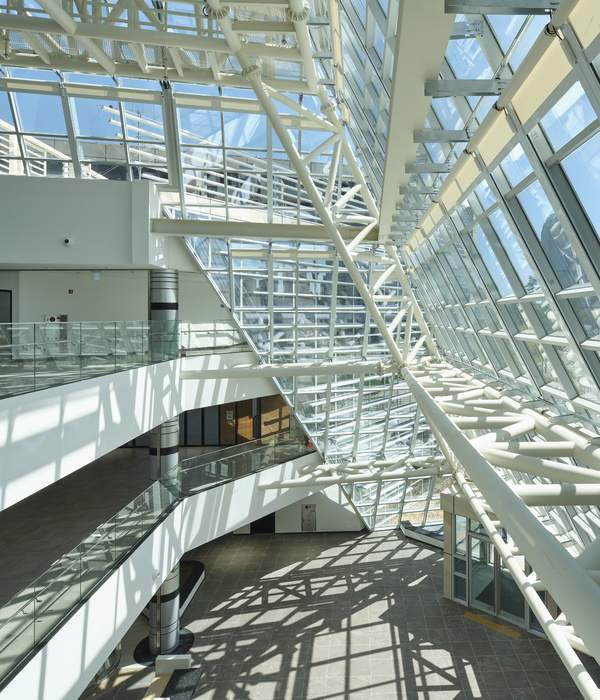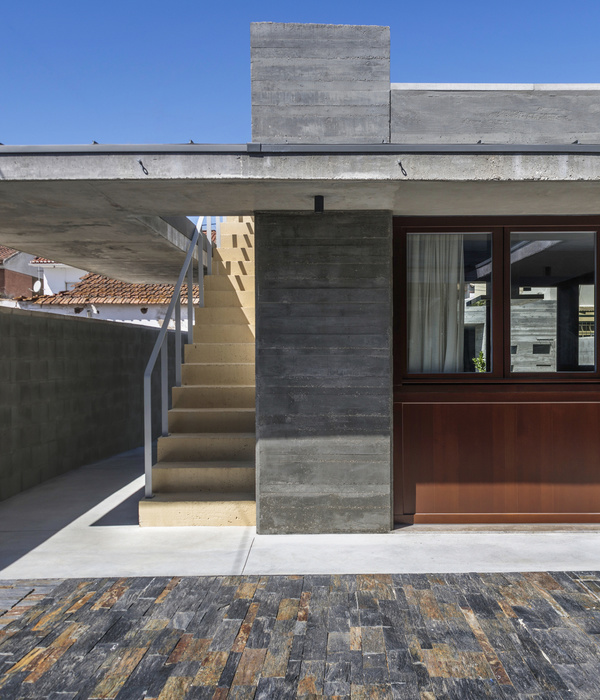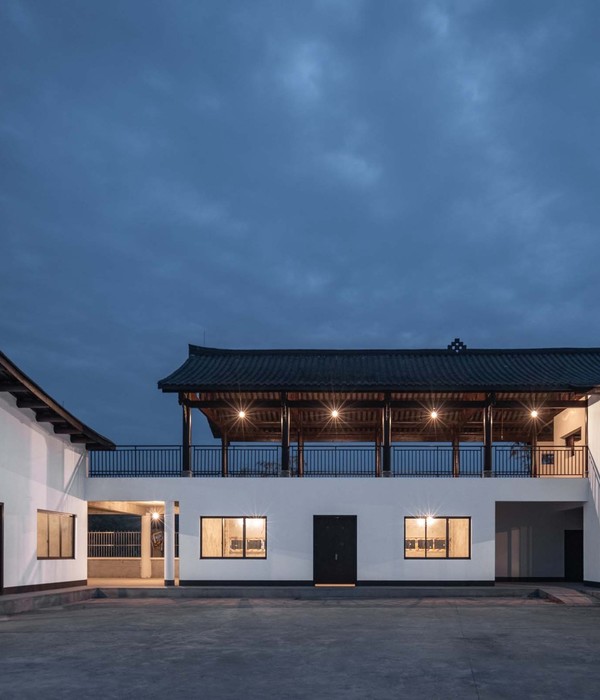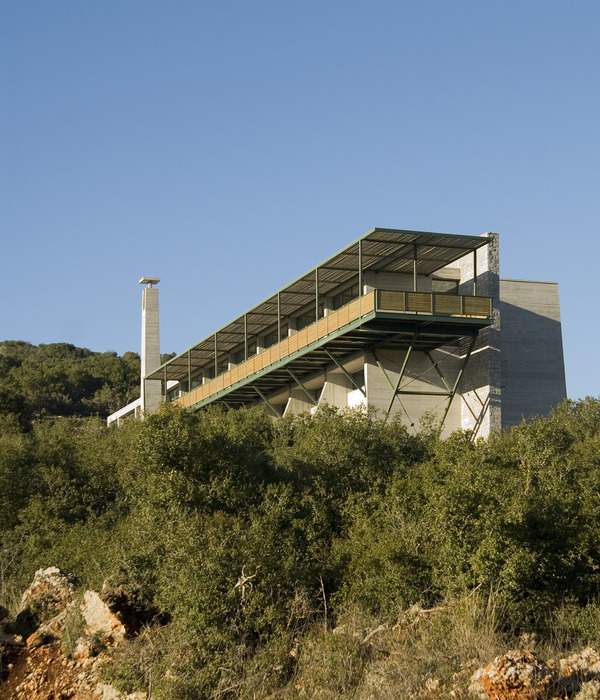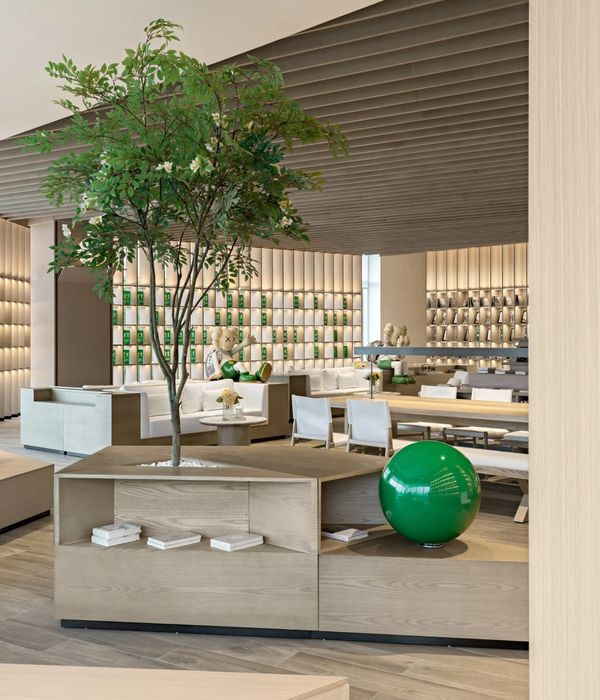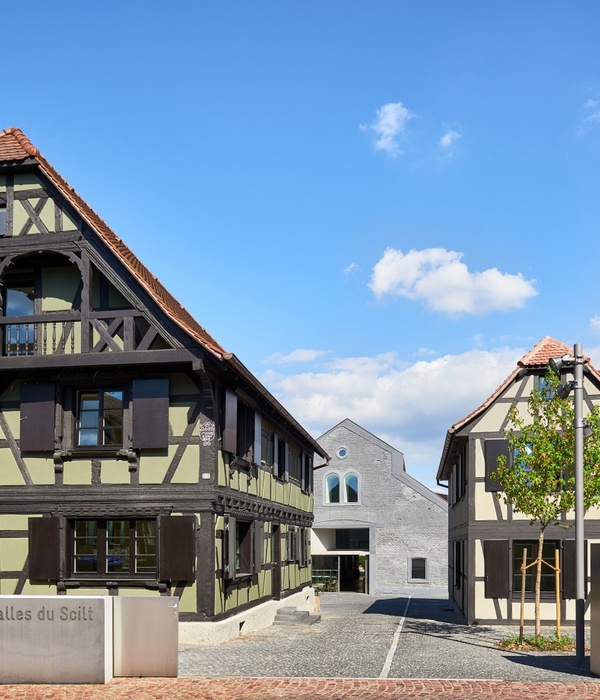Thailand Erber Research center
设计方:Chiangmai Life Construction
位置:泰国
分类:办公建筑
内容:实景照片
图片:21张
摄影师:Create Up Co., Ltd. and Markus Roselieb
这是由Chiangmai Life Construction设计的Erber研究中心。该项目由Erich Erber先生捐助而建,他是百奥明饲料添加剂有限公司的创始人。该项目旨在在现状肉鸡养殖场旁边建立一座建筑物,使学生与游客可以通过窗户学习肉鸡的饲养。出于卫生原因,参观者不得进入养殖大厅。此外,项目还应包括可容纳70名学生的报告厅,20人的小会议室,一个教授的行政办公室以及厨房和浴室。建筑材料均采用天然材料,如竹子和泥土。建筑师的设计灵感来自传统农场的建筑和院子。
译者:筑龙网艾比
From the architect. The Erber Center, sponsored by Mr. Erich Erber, the founder of Biomin, an animal nutrition company. Biomin is partnering with Kasetsart University, Thailand’s main agricultural university, on research of how to commercially grow healthy chicken without the use of pharmaceuticals. Biomin had already sponsored and built a broiler hall at Kasetsart’s huge Kamphaengsaen Campus which covers over 5,000 acres and is situated about 200km northeast of Bangkok. This broiler hall was in the middle of fields, about 5-10 km from the main campus.
The brief was to design and build a facility that allowed students and visitors to study chicken rearing through the windows already provided on the broiler hall. For hygienic reasons visitors are not allowed to enter the broiler hall itself. Furthermore the facility should house a lecture hall for about 70 students, a smaller conference room for about 20 people, an office for the professors and administration as well as a kitchen and the bathrooms. All this using natural materials, i.e. bamboo and earth only. The challenge was how to adapt these materials to the functionality desired and to the aesthetic requirements of 21st century folks.
Chiangmai Life Construction’s concept of this 563 sqm facility is based on the lay-out of the traditional farm house with a square courtyard. A covered observation platform allows students and visitors to observe the broiler house activities without getting soaked in the rainy season. We hired a famous Thai spray artist to transform the boring looking windows into the eyes of a chicken. This platform connects on one side in a right angel to a meeting room and a lecture hall and on the other corner to an office for the researchers as well as the necessary infrastructure – kitchen and bathrooms. These two legs of the institute are connected in the front by a traditional “moon gate”.
This layout of a central open-air space encircled by a shady arcade with lounge like informal spaces which again is surrounded by rooms filled with activity not only refers back to the roots of agricultural life but also immediately creates an intimate space conducive for exchanging ideas and concentrated learning in an otherwise vast open expanse of fields. This design brings traditional agricultural architecture to today’s students who grow up in concrete bunkers.
The connection to agriculture is further enhanced by the materials used - mainly earth and bamboo. The walls are made of adobe bricks which were produced on site or rammed earth and the roof is made of Borax salt-treated bamboo.These materials create very comfortable and cool spaces, and when used correctly can last for centuries as seen in earth buildings all around the world.They reduce the carbon footprint by an estimated 90% without any loss in modern day comfort or increased cost.This is in line with the purpose of the building - how to enhance agricultural or architectural outputs without damaging the natural environment.
泰国Erber研究中心外部实景图
泰国Erber研究中心内部实景图
泰国Erber研究中心夜景实景图
泰国Erber研究中心平面图
泰国Erber研究中心剖面图
泰国Erber研究中心立面图
{{item.text_origin}}

